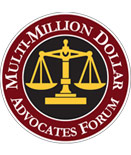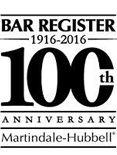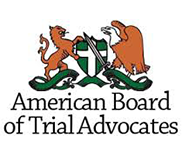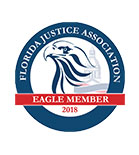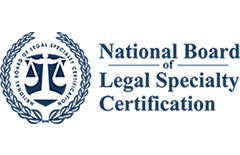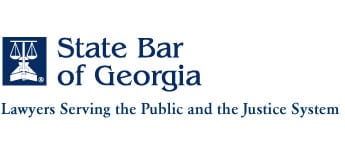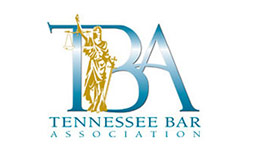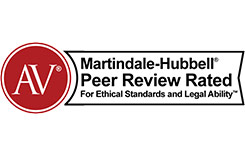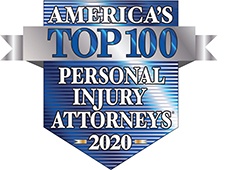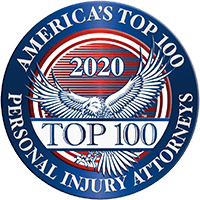By
Melvin B. Wright
Colling Gilbert Wright
2301 Maitland Center Parkway
Maitland, Florida 32751
407-712-7300
TheFloridaFirm.com
Proving Abuse & Neglect
-
- Law Enforcement Investigation
If your case involves a reported case of abuse or neglect, law enforcement authorities will often be called upon to investigate. After a full investigation, a an investigative report will result and can serve as a road map for litigation in many cases and, at worst, a valuable investigative tool for the civil litigation.Law enforcement authorities investigate a wide variety of cases including sexual or physical abuse, neglect or exploitation, unexplained or suspicious deaths, and elopement/missing persons cases. - Department of Children and Families
- Law Enforcement Investigation
Like law enforcement authorities, the State of Florida Department of Children and Families is called upon to investigate reported cases of abuse or neglect. They also issue investigative reports that can be valuable sources of investigative information for litigants and their attorneys. Always ask your client if they have reported a case of suspected abuse or neglect to the “abuse hotline” of the Department of Children and Families. If they haven’t, it is often wise to do so, and to await the investigative results and request the investigative report.
-
- Agency for Health Care AdministrationThe State of Florida Agency for Health Care Administration also performs investigations of incidents of abuse and neglect to determine if the facility has violated laws and regulations setting the standard of care and operations of long term care facilities. Always ask clients if they have reported suspected abuse or neglect to AHCA. If they have not, it is advisable that they do so. The investigative survey reports arising from these investigations can likewise prove to be valuable sources of information for the litigants and their attorneys.AHCA also performs surveys of all long term care facilities at regular intervals to assure compliance with OBRA regulations, the Florida Administrative Code and federal and state statutes. AHCA issues citations regarding any deficiencies that are discovered during these investigations. Surveys are extremely valuable tools for establishing deficiencies in overall facility operations during certain time frames that will overlap with a particular residents stay. AHCA surveys can help prove a pattern of inadequate care in all categories of patient care, from facility-wide staffing and hiring practices to specific areas of resident care, such as pressure sore prevention and treatment, nutrition, hydration, infection control, etc.
While surveys do not identify residents or staff members by name, one can often determine if a particular resident is the subject of any survey findings by reference to certain rooms, halls or wings of a facility, together with the medical diagnoses and condition of the resident. More often than you would expect, a particular abused or neglected resident is the subject of surveyors’ findings and citations. In addition, although surveys do not always result in “confirmed” instances of abuse or neglect, the factual observations of the surveyors and citations issued can be valuable elements of proof that corroborate litigants’ independent investigation findings and discovery in litigation.
-
- Patient RecordsAll patient records should be requested and reviewed by both counsel and a qualified expert in nursing home care. In the typical nursing home case, a nurse with experience in long term facility nursing standards, such as a former director of nursing, is a must. In addition, records should be reviewed by a qualified geriatric medical specialist, such as an internal medicine physician with experience in geriatric care. Preferably, a former long term care facility medical director is the medical expert of choice.Patient records include not only the nursing home chart, but also the hospital records prior to and after the nursing home stay, as well as any interval hospital visits during the nursing home admission. All of these records will be compared and contrasted by the nursing and medical consultants with litigation experience. Often, inconsistencies in the records will be evident, perhaps indicating potential areas of inaccurate assessment or care at the long term care facility causing or leading to neglect or abuse.
A careful analysis of the records will often times reveal misleading, inaccurate, and fraudulent charting relating to the nursing home’s care of your client. False charting or late entries, for example, are often indicators of abuse or neglect and attempts to cover up poor care or specific instances of abuse of neglect. The trained eye can often easily spot false or misleading record entries. Comparing different parts of the same chart will sometimes suggest falsification or inaccurate record keeping. For example, medication administration records, flowsheets, and even progress notes have been found to contain entries during known hospitalizations and even after death of a resident, calling into question the historic accuracy of the entire chart. Given poor outcome, records of excellent care are unconvincing in context with suspect record entries.
- Patient RecordsAll patient records should be requested and reviewed by both counsel and a qualified expert in nursing home care. In the typical nursing home case, a nurse with experience in long term facility nursing standards, such as a former director of nursing, is a must. In addition, records should be reviewed by a qualified geriatric medical specialist, such as an internal medicine physician with experience in geriatric care. Preferably, a former long term care facility medical director is the medical expert of choice.Patient records include not only the nursing home chart, but also the hospital records prior to and after the nursing home stay, as well as any interval hospital visits during the nursing home admission. All of these records will be compared and contrasted by the nursing and medical consultants with litigation experience. Often, inconsistencies in the records will be evident, perhaps indicating potential areas of inaccurate assessment or care at the long term care facility causing or leading to neglect or abuse.
Evaluation of a nursing home claim is based, at least initially during screening, on the records prepared by the nursing home staff and management. Detailed analysis of the records will often uncover misleading, inaccurate, and even fraudulent charting of the care of your client. Look for the following examples of fraudulent charting:
-
-
- False charting: Scrutinize the Activities of Daily living (ADL) or care flow sheets and compare them to Physical Therapy notes, Nurses Notes, Physician’s Progress Notes, Consultation reports, and other records in the chart. Often the nursing staff charts for care that was never provided. Comparing these records to employee time records sometimes reveal care was provided when the recording employee was not on duty.
- Late Entries: A “late entry” in the resident’s chart should always invite close scrutiny. After the occurrence of an incident of abuse or neglect, the staff will often attempt to sanitize the record of what exactly occurred to cover up abuse, neglect or negligence.
- Charting by Exception: Most nurses will tell you “if it wasn’t charted, it wasn’t done”. Staff in long term care facilities often testify that they do not chart everything they do for a resident because it is unnecessary to document all of the specific care provided to a resident. Most will also admit, however, that assuring continuity of care requires accurate records of the care provided to a resident in order to achieve care plan goals. Multi-disciplinary care plan teams rely almost strictly on the records of care provided and the outcome of that care in order to determine whether goals are being met or whether the care plan requires modification to assure the resident’s condition does not decline. For example, if a care plan requires a resident to be turned and repositioned every 2 hours to avoid pressure sores and the resident develops pressure sores when the records showing this care was provided are absent, the long term care facility will have a difficult time explaining to the jury that, while the services not recorded, the staff still turned and repositioned the resident every 2 hours. The outcome belies the assertion that the care was provided. Moreover, authoritative literature on many specific care issues, such as pressure sore prevention, mandate recording services provided and the outcome of the care plan requiring that those services, in order to attain and maintain the resident’s condition.
- OPERATIONAL RECORDS
-
Each facility maintains records of their operations that are helpful in proving that the facility was understaffed with qualified caregivers during a particular timeframe. It is critical to each case to obtain these records to corroborate a claim of abuse or neglect cause in part by improper management or operation of the long term care facility.
-
-
- Resident Census: The long term care facility’s census records the population of the facility during a given time frame. These records are important for forensic accounting analyses of whether there was compliance with staff to patient ratios required by federal or state law or regulations.
- Employee Time Cards and Payroll Records: These records are likely the most accurate recordation of the number of staff on duty during a specific timeframe and the hours worked during that timeframe. By comparison of these records to census, posted staff schedules, staff sign-in sheets, and your client’s chart, a complex and detailed staffing analysis can he helpful in proving whether and to what extent a facility was understaffed.
- FORMER EMPLOYEE TESTIMONY
-
A common and often overlooked method of proving what kind of care a long term care facility provided during a particular time frame and under certain management is presentation of testimony of former employees of the facility. Often, the most accurate and truthful testimony of an instance of abuse or a pattern of neglectful care comes from one-time employees who left their job because they couldn’t tolerate the neglect or abuse or who was terminated from their job for speaking out against the neglect or abuse.
Former employees can be located through formal discovery via interrogatories and document production, as well as through worker’s compensation claims records and other sources of public information. Locating such employees can be expensive but well worth the expense and effort since most nursing home residents are incapable of testifying about their own observations and since most family members will have limited knowledge and be viewed as having a financial motive for their testimony. Good private investigators experienced in investigating cases of institutional abuse and neglect are expensive but, when successful, can find the single most important witness in a case of abuse or neglect.
-
- FAMILY TESTIMONY
Testimony of family and friends about their own observations are obviously the most freely available source of information about abuse and neglect of residents. Family members who regularly visited their loved one can and will testify about their personal experiences at the long term care facility. Friends, particularly clergy, church members, and other close friends often provide the most compelling testimony in cases of abuse or neglect.
-
- PHOTOGRAPHS
Early in the investigation of a case, the attorney should have a professional photographer available on short notice to take photographs of injuries sustained by the resident or medical conditions that developed or worsened during the nursing home stay. These photographs not only provide compelling evidence to any jury or judge, but they also can be useful to medical professionals and experts in diagnosing the cause of the injury or condition. For example, photographs of pressure sores can prove critical in accurately staging the sore and are often in conflict with the records of the long term care facility.
Photographs taken by the long term care facility, hospitals, wound care centers, or physicians are likewise probative, compelling and critical pieces of evidence that must be obtained. These health care providers will often fail to produce these photographs in response to routine record requests, so it is extremely important to never assume that such photographs do not exist. Separate specific written requests for such photographs should be made. In addition, before assuming the photographs do not exist, it is often advisable to take the deposition of the designated records custodian of those health care offices.

 (407) 712-7300
(407) 712-7300




